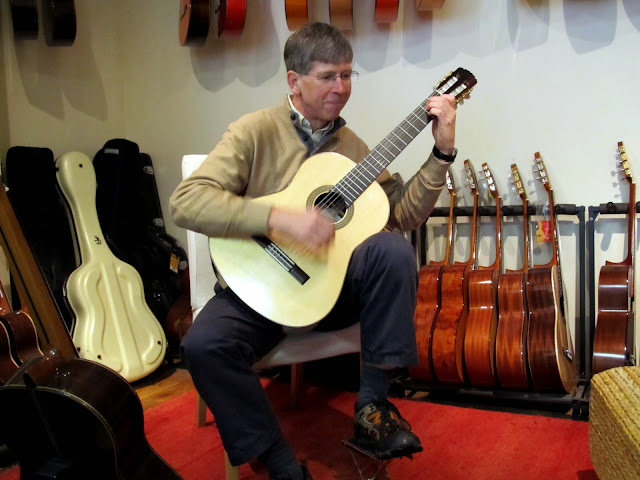Recently we attended the wedding of Rick's niece Allison in New Harmony, Indiana. Allison wisely chose this small town near the Kentucky and Illinois borders as a site for family and friends to congregate for her special day, knowing they would find it as enchanting and romantic -- not to mention fascinating -- as she did.
This spot is exquisite and if you are traveling in this part of the U.S., a detour to New Harmony will refresh you. Don't look for the wild and crazy good times (although after the rehearsal and reception, I am told by many of the 20-40 set that a very good time was had at the Yellow Tavern!). What you will find include historic buildings, beautiful biking areas, charming homes, a small but lovely downtown with good shopping and a labyrinth and roofless church, both of which will be featured in separate posts.
It must be "wedding city" -- there were five or six weddings taking place over the weekend we were there, and the New Harmony Inn also serves as a center for conferences. It's the quietest town I've ever been in -- many of the New Harmony residents skip about in golf carts.
I enjoyed the antique stores and farmer's market, even though that was very small. A quiet early morning walk was truly a spiritual highlight and I could understand the historical elements of the town simply by walking.
The Lenz House (c. 1819-22) had a lovely kitchen garden.
We stayed in the New Harmony Inn, which was very nice. (Everything is walking distance in this hamlet). However, I would recommend one of the lovely guest houses. I'm told from those who were there that they are filled with antiques and many, like this one, had lovely patios for breakfast.
Guest House
The rest of this post includes the fascinating historical background of New Harmony, edited from a piece written by Rod Clark for the wedding couple's "goodie bag." Even if you aren't interested in the history of this intriguing 1800s experiment in communal living (different from but not unlike the Shakers) read on!
The cabin on the far right is the first Rappite log cabin and built in 1804
New Harmony was established 200 years ago by a group of German immigrants led by George Rapp. Rapp's religious sect (Deists) had undergone religious persecution in Germany and they fled to the newly founded America. They were known as The Harmonist Society and they established one of the earlier attempts at community living in the United States.
Our group checked out the brick work on the original communal living dormitory
The Harmonists were a strictly religious group and wanted to establish a Utopian community based on their understanding of "God's Kingdom." They shared properties and revenue in principles we would now equate more with socialism.
In many ways, they remind me of the Shakers, at least in terms of producing quality items. The Shakers are known for their furniture; the Harmonists for items like textiles, whiskey, beer and rope. They exported these items both to other states and Europe and were so successful that they left the town to move closer to their markets (1825).
In Scotland, progressive European manufacturer Robert Owen had learned of the Harmonists' concept of community organization and when the town was put up for sale, Owen decided to purchase the community to begin his community of a new society with shared ownership and labor.
Because he was so successful in Europe, he attracted the curiosity and scrutiny of others to see how this new system would work and initially it was met with great enthusiasm.
But unfortunately, rather than simply gathering the hard workers, Owen's plans also attempted those looking for a "free ride" and he abandoned the community two years later. His sons, however, and others in New Harmony remained and eventually the town became a known as a cultural and scientific center.
Some buildings are preserved inside as they were in the 1800s.
The town has been exquisitely preserved thanks to the efforts of Jane Blaffer Owen, a Texaco/Exxon heiress who married one of the Owen descendents in the 1940s. She committed her wealth and her energies to preserving the town as a spiritual retreat center and a place of art, music and beauty.
If you head to New Harmony, check out the antique shops, had a terrific salad at Sara's (also a lovely wine bar with an excellent list).Sit for a few minutes in one of the parks or gardens. Just wander.
You'll be refreshed, peaceful, calm -- and pleasantly surprised!
































































